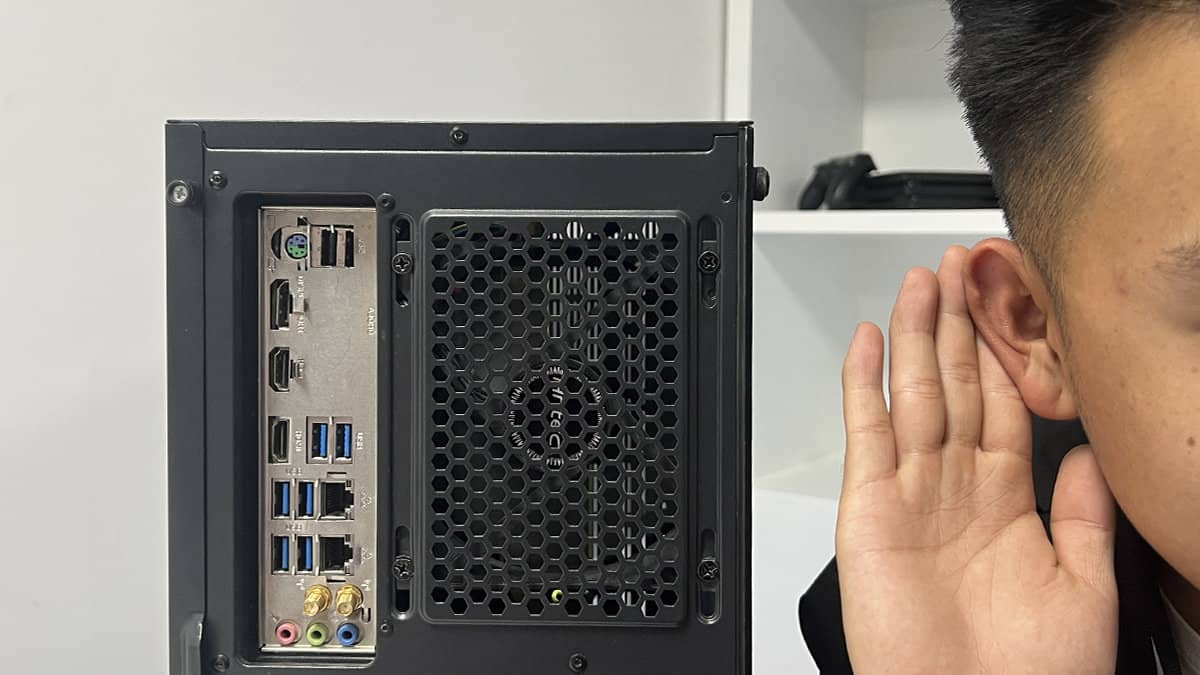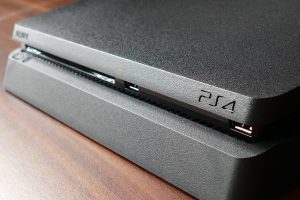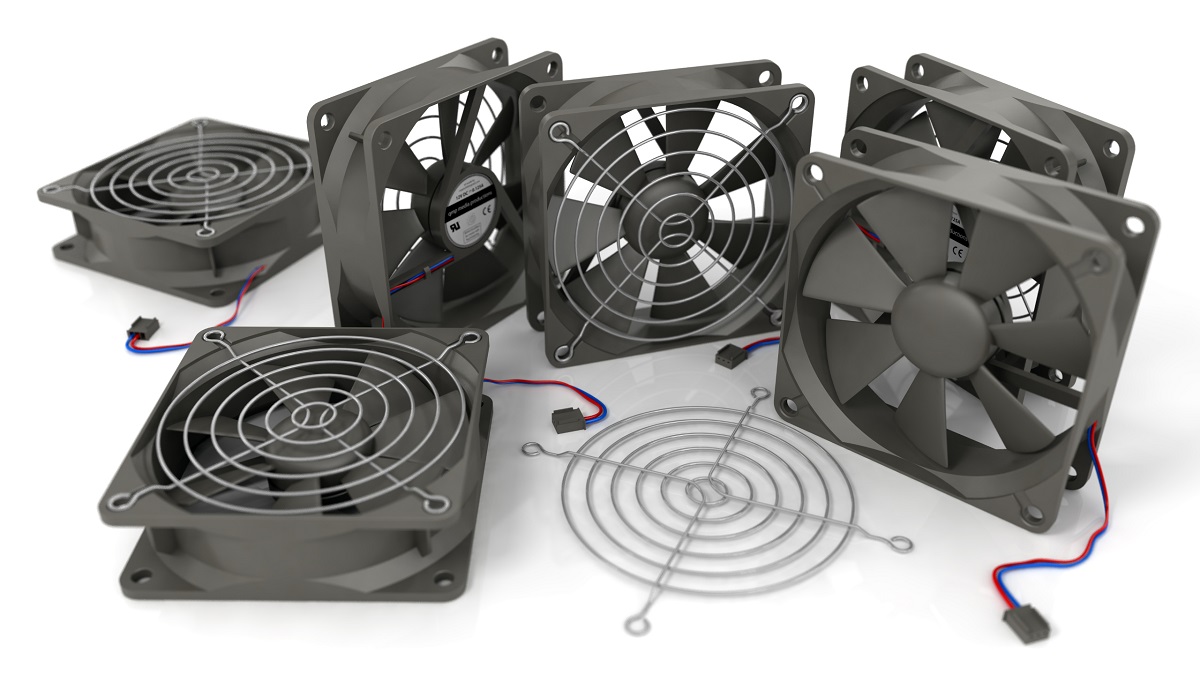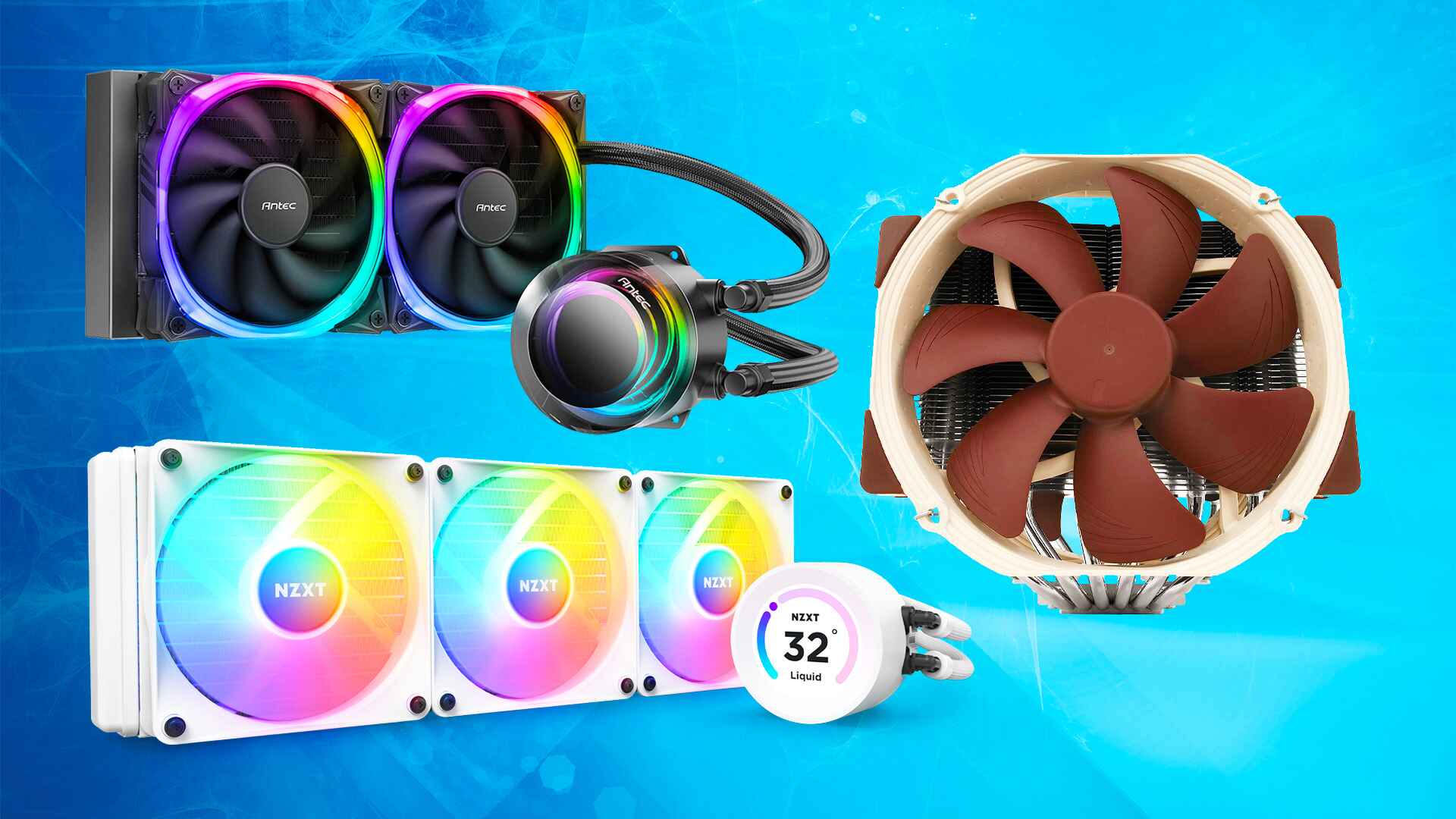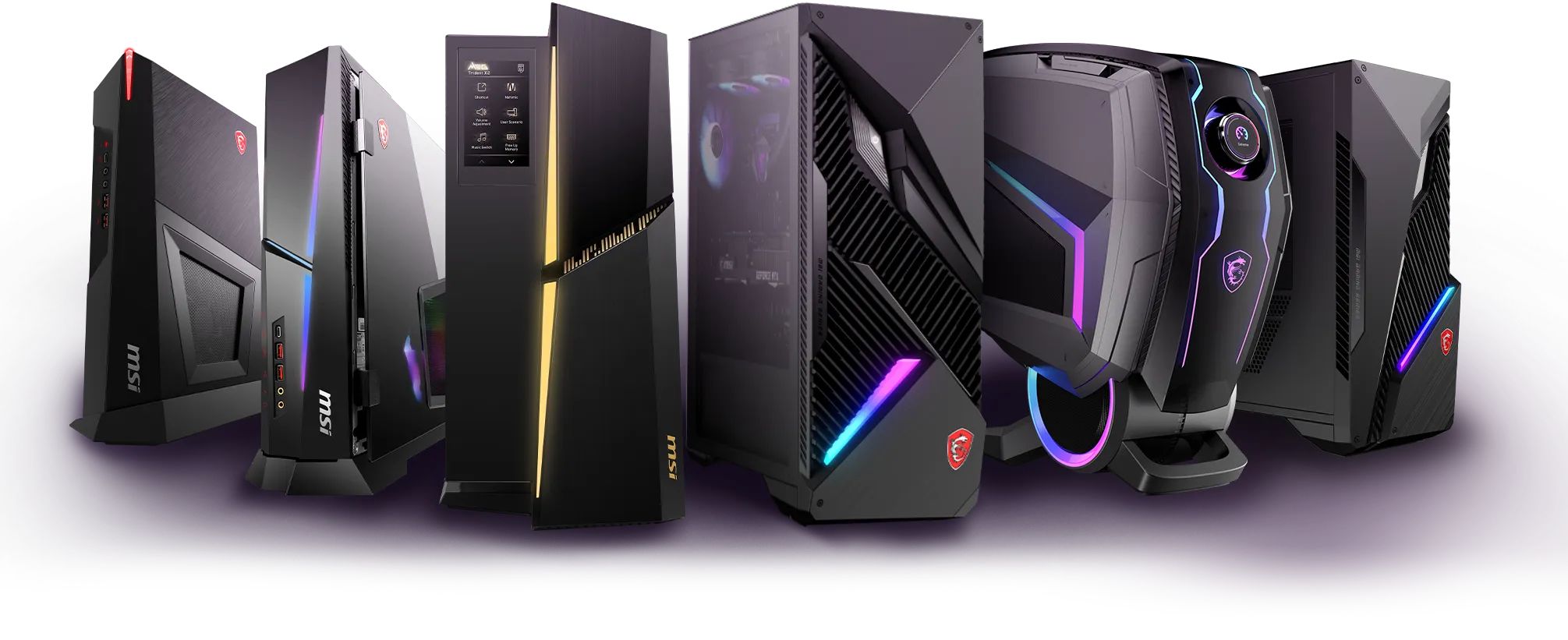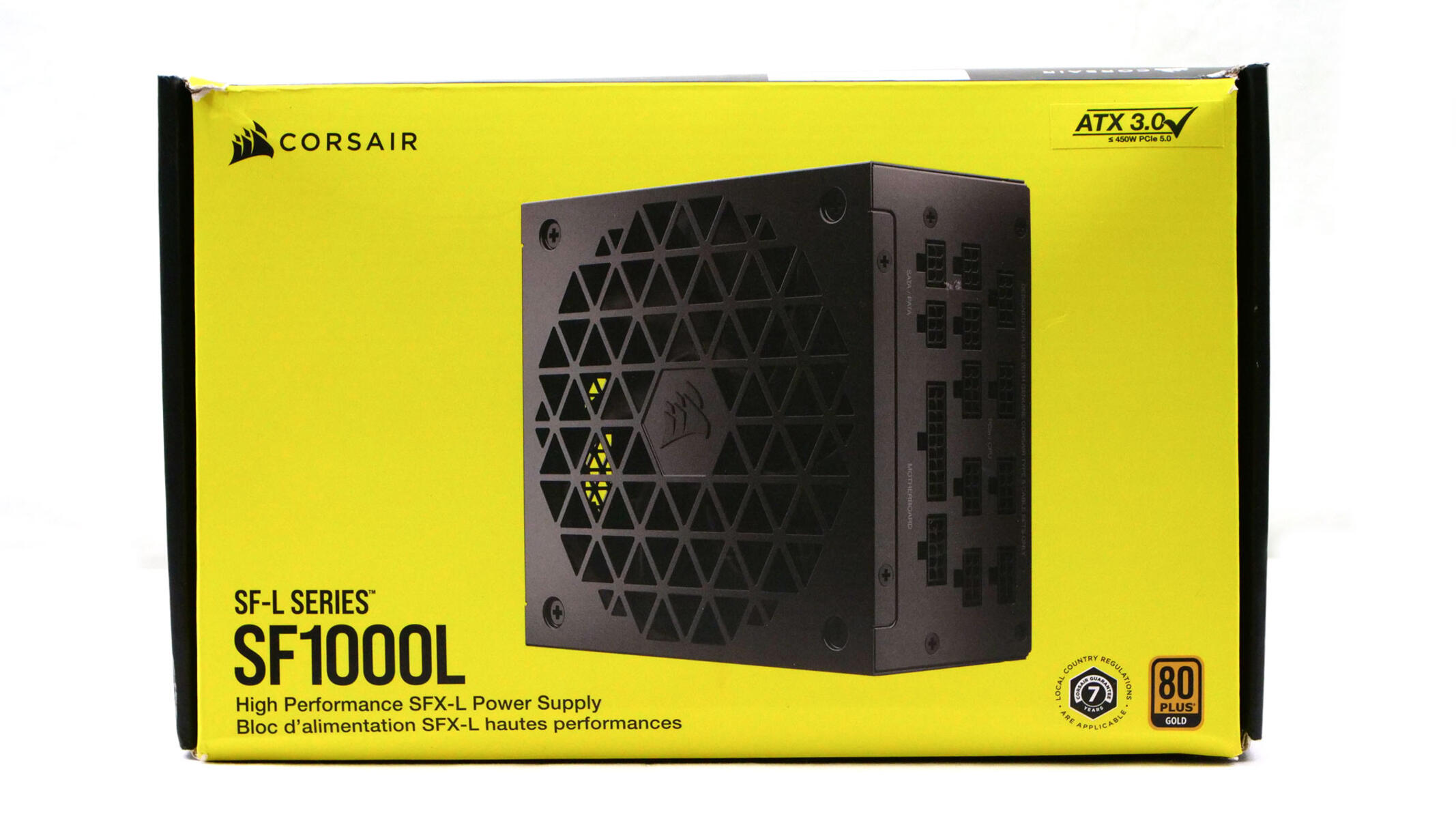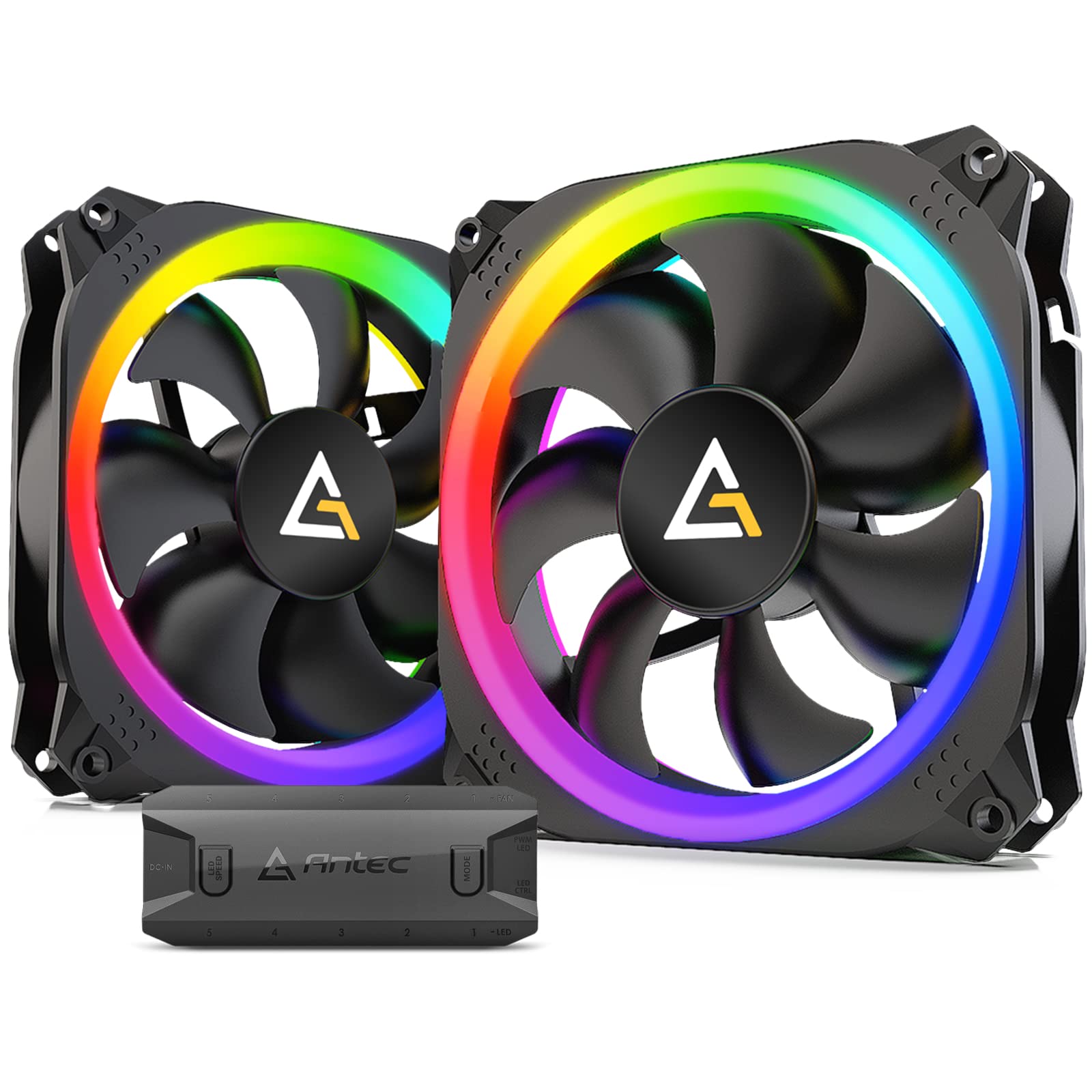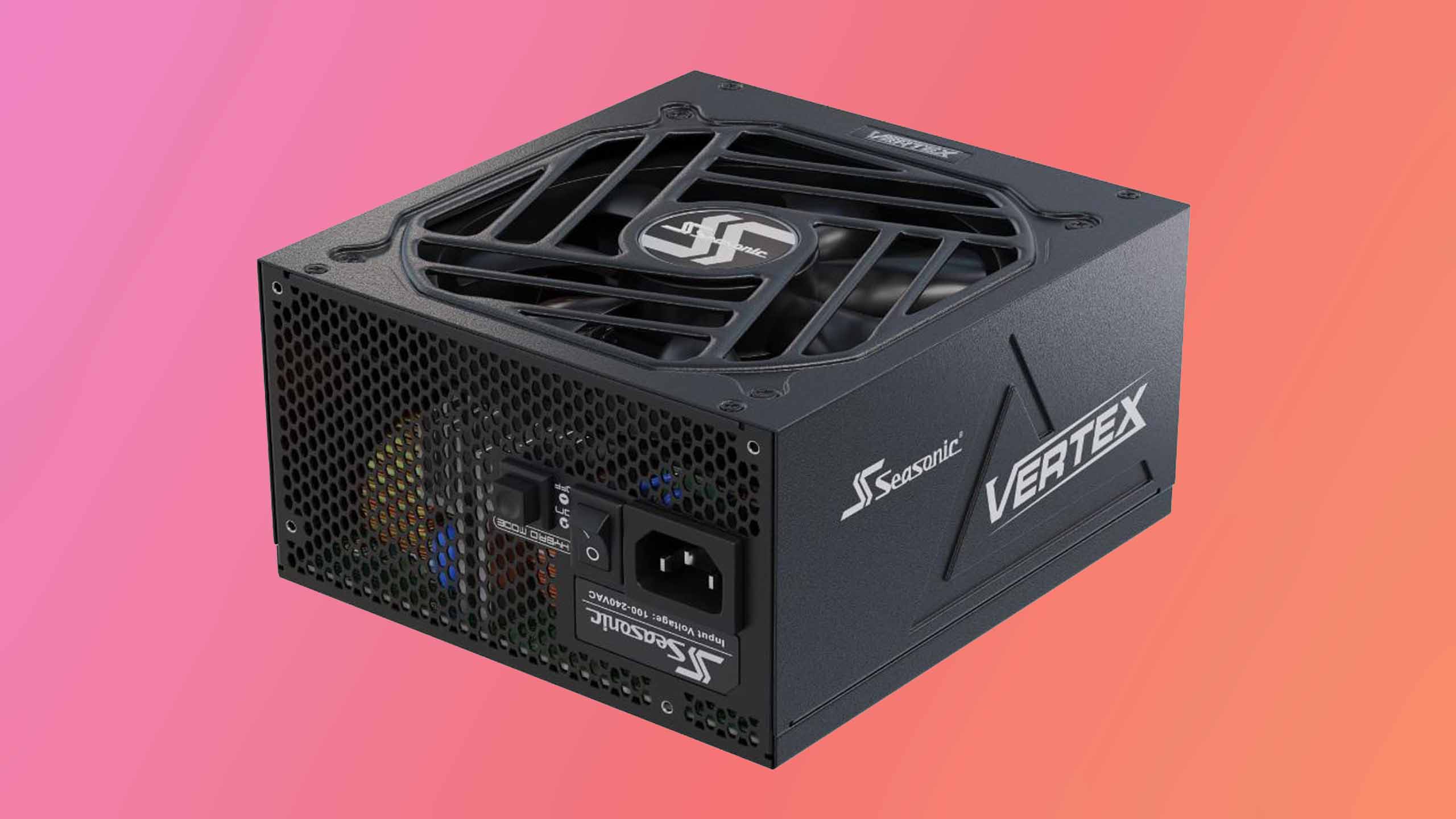Introduction
When it comes to buying case fans, one important factor that often gets overlooked is the noise level they produce. However, understanding how loud a fan should be can significantly impact your overall computing experience. The last thing you want is a fan that sounds like a jet engine taking off every time you use your computer.
Noise from case fans can be a nuisance, especially if you spend long hours in front of your computer or use it in a quiet environment. Excessive fan noise can be distracting, disrupt concentration, and even disturb others in close proximity. That’s why it’s crucial to find the right balance between cooling performance and noise level when purchasing case fans.
In this article, we will delve into the important factors to consider when buying case fans and discuss how to choose the appropriate noise level for your needs. We will also explore key terms related to fan noise ratings, such as decibels (dB), CFM to dB ratio, and sound frequency.
By the end of this article, you will have a better understanding of how loud your case fans should be and be equipped with the knowledge to make an informed decision for a quieter and more enjoyable computing experience.
Why is Fan Noise Important?
Fan noise may seem like a minor concern when it comes to choosing case fans, but it holds significant importance for several reasons. Let’s explore why fan noise should be a key consideration in your purchasing decision.
First and foremost, excessive fan noise can be incredibly irritating. Imagine working on an important task or enjoying a movie, only to be constantly distracted by the whirring, buzzing, or humming sound emanating from your computer. It can disrupt your concentration and hinder your overall productivity. Furthermore, fan noise can be particularly bothersome if you use your computer in a quiet environment, such as a home office or a library.
Moreover, fan noise can have a negative impact on your overall well-being. Studies have shown that prolonged exposure to loud or constant noise can lead to increased stress levels, fatigue, and even contribute to hearing loss over time. By prioritizing fan noise reduction, you can create a more peaceful and healthier computing environment.
Furthermore, quieter fans can improve the longevity of your computer components. Excessive fan noise often indicates that the fan is working harder to cool your system, which may lead to increased wear and tear. By investing in quieter, more efficient fans, you can potentially extend the lifespan of your computer, reduce the risk of overheating, and prevent unnecessary damage to your hardware.
In addition, if you frequently engage in activities that require audio recording or streaming, such as content creation or gaming, fan noise can be a major hindrance. Unwanted background noise can affect the quality of your recordings or streams and compromise the overall experience for your audience. Choosing quieter fans can significantly minimize this issue, allowing for clearer and more professional audio output.
Overall, considering fan noise is essential for creating a more comfortable, productive, and enjoyable computing experience. It not only helps minimize distractions but also contributes to your well-being and the longevity of your computer. So, when selecting case fans, don’t overlook the importance of finding a balance between cooling performance and noise level.
Factors to Consider
When purchasing case fans, there are several important factors to consider in order to strike the right balance between cooling performance and noise level. Let’s explore these factors in detail:
Fan Speed
The speed at which a fan rotates directly affects its noise level. Generally, higher fan speeds result in louder operation. However, higher speeds also offer increased airflow and better cooling performance. It’s crucial to find a fan speed that meets your cooling needs while remaining at an acceptable noise level for your preferences.
Fan Size
The size of a fan can impact both its noise level and airflow efficiency. Larger fans tend to produce less noise compared to smaller fans because they can move the same amount of air at lower rotations per minute (RPM). Additionally, larger fans have larger blades, allowing for quieter operation as they don’t need to rotate as rapidly.
Noise Level
The noise level of a fan is typically measured in decibels (dB). A lower dB rating indicates a quieter fan. Consider your specific requirements and environment when choosing the noise level that is acceptable for you. Fans with lower noise levels are ideal for quiet environments or situations where noise reduction is a priority.
Airflow
Adequate airflow is crucial for optimal cooling performance. While it’s essential to minimize fan noise, it’s equally important to ensure sufficient airflow to prevent overheating. Look for fans that strike a balance between noise level and airflow efficiency. Fans with optimized blade designs and higher CFM (cubic feet per minute) ratings often provide better airflow while maintaining lower noise levels.
By considering these factors when selecting case fans, you can make an informed decision that aligns with your cooling needs and noise preferences. Keep in mind that finding the right balance is key – a fan that is too loud may be disruptive, while a fan that is too quiet may not provide sufficient cooling.
Fan Speed
The speed at which a case fan operates is an essential factor to consider when it comes to fan noise. Fan speeds are measured in rotations per minute (RPM) and directly impact the amount of noise produced.
As a general rule, higher fan speeds result in louder operation. When a fan rotates at a high RPM, it generates more airflow, which leads to better cooling performance. However, this increased airflow comes at the cost of increased noise.
If you prioritize cooling performance and your computer is located in a noise-tolerant environment, using fans with higher RPM ratings might be suitable for you. These fans can efficiently dissipate heat from your components, ensuring optimal temperatures. However, keep in mind that the increased noise level may be bothersome in quiet surroundings or during activities that require audio recording or streaming.
On the other hand, if noise reduction is a priority or if you use your computer in a noise-sensitive environment, opting for fans with lower RPM ratings is recommended. These fans spin at a slower pace, resulting in quieter operation. While they may not provide the same level of cooling performance as their higher-speed counterparts, they can still effectively cool your system while maintaining a more peaceful environment.
It’s worth mentioning that many modern case fans come with adjustable fan speeds. These fans have a feature usually referred to as fan speed control, letting you customize the RPM to find the right balance between cooling performance and noise level. This flexibility allows you to tailor the fan’s operation to your specific requirements.
When choosing case fans based on fan speed, always consider your needs, preferences, and the environment in which your computer is located. By finding the right fan speed that strikes a balance between cooling performance and noise level, you can ensure optimal cooling efficiency without unnecessary disturbances.
Fan Size
The size of a case fan is an important factor to consider when it comes to noise level and airflow efficiency. The size of the fan directly correlates with its noise production and cooling capabilities.
In general, larger fans tend to produce less noise compared to smaller fans. This is because larger fans can move the same amount of air at lower rotations per minute (RPM), resulting in quieter operation. Additionally, larger fans have larger blades, which means they don’t need to rotate as rapidly to provide sufficient airflow. This slower rotation contributes to reduced noise levels.
On the other hand, smaller fans typically need to spin at higher RPMs to generate adequate airflow. Higher RPMs can lead to increased noise levels as the fan blades cut through the air more quickly. However, smaller fans are often more compact and can fit into tight spaces where larger fans might not be suitable.
When selecting the fan size, consider the available space in your computer case. If there is ample room, opting for larger fans, such as 120mm or 140mm, is generally recommended. These larger fans can move air more efficiently while operating at lower noise levels.
However, if your computer case has limited space or specific fan mounting points designed for smaller fans, you may need to choose smaller fan sizes, like 80mm or 92mm. While they may generate slightly more noise due to their higher RPMs, they can still provide adequate airflow for cooling your components.
Remember, the overall goal is to find a fan size that strikes the right balance between noise level and airflow efficiency for your specific needs. Larger fans tend to be quieter, but smaller fans can be more suitable for compact cases. Consider the available space and prioritize cooling performance while keeping noise reduction in mind.
Noise Level
The noise level of a case fan is a key consideration when it comes to creating a quiet and comfortable computing environment. The noise level of a fan is typically measured in decibels (dB), with lower dB ratings indicating quieter operation.
When choosing case fans based on noise level, it’s essential to consider your specific requirements and the environment in which your computer will be used. If you work or play in a noise-sensitive environment, such as a home office or a quiet room, you’ll likely want fans with lower noise levels to minimize distractions.
Fans with noise levels below 20 dB are generally considered whisper-quiet and can provide an almost silent computing experience. These fans are suitable for those who prioritize a noise-free environment or engage in tasks that require minimal background noise, such as audio recording or editing.
However, it’s important to note that lower noise levels often come with a trade-off in terms of cooling performance. Fans with extremely low noise levels might not provide the same airflow as higher-speed counterparts. Therefore, it’s crucial to strike a balance between noise level and cooling efficiency based on your specific needs.
For general computing and gaming purposes, fans with noise levels ranging from 20 dB to 30 dB are often a good compromise. These fans offer decent cooling performance while emitting an acceptable amount of noise. They strike a balance between keeping your system cool and maintaining a relatively quiet environment.
If you are in a noise-tolerant environment or prioritize optimal cooling performance, fans with noise levels up to 40 dB or slightly higher can be suitable. These fans often provide excellent airflow and cooling capabilities but may produce a noticeable level of noise during operation.
Ultimately, the ideal noise level for your case fans depends on your personal preferences, the tasks you perform on your computer, and the environment in which it is used. By considering your specific needs, you can select case fans that offer a noise level that aligns with your requirements, ensuring a more peaceful and enjoyable computing experience.
Airflow
The airflow of a case fan plays a crucial role in maintaining optimal cooling performance. Adequate airflow helps to dissipate heat from your computer’s components, preventing overheating and ensuring reliable operation. When choosing case fans, it’s important to consider the airflow they can provide, balancing it with the desired noise level.
High airflow is typically measured in cubic feet per minute (CFM), representing the volume of air a fan can move in one minute. Fans with higher CFM ratings can deliver more air and provide better cooling performance. However, these fans often generate more noise as they rotate at higher speeds to produce sufficient airflow.
Optimizing airflow is about finding the right balance between cooling efficiency and noise level. You want to ensure that your components receive adequate airflow for effective cooling without creating excessive noise that may be disruptive or bothersome, particularly in quiet environments.
When selecting case fans, consider the specific cooling requirements of your computer. If you have a high-performance system or if you frequently engage in intensive tasks such as gaming or content creation that generate a significant amount of heat, fans with higher CFM ratings may be necessary to ensure sufficient cooling.
On the other hand, if you have a standard computer setup or if noise reduction is a priority, you may opt for fans with lower CFM ratings. These fans can still provide adequate cooling for average usage scenarios while operating at lower noise levels.
It’s also worth noting that the design of fan blades can impact airflow efficiency. Fans with optimized blade designs, such as curved or angled blades, can help direct airflow more effectively, reducing turbulence and noise generation.
Ultimately, the goal is to choose case fans that strike a balance between appropriate airflow for cooling performance and a noise level that suits your preferences and environment. By considering the CFM rating, blade design, and noise level of the fans, you can ensure that your computer remains adequately cooled while minimizing unnecessary noise.
Understanding Fan Noise Ratings
When it comes to assessing the noise level of case fans, it’s important to understand the various fan noise ratings. These ratings can help you make an informed decision when choosing fans that align with your desired noise levels. Let’s explore the key terms related to fan noise ratings:
Decibels (dB)
Decibels (dB) are used to measure sound intensity, including fan noise. The decibel scale is logarithmic, meaning that a small increase in decibel level represents a significant increase in sound intensity. Generally, a lower dB rating indicates a quieter fan.
For example, a fan with a noise level of 20 dB is significantly quieter than a fan with a noise level of 30 dB. By paying attention to the dB rating, you can gauge the level of noise that a fan will produce during operation.
CFM to dB Ratio
The ratio between cubic feet per minute (CFM) and decibels (dB) is another important consideration when it comes to fan noise ratings. This ratio represents the airflow efficiency of a fan in relation to its noise level.
A higher CFM to dB ratio indicates a fan that can provide better airflow while generating less noise. It’s essential to find a fan with a balanced CFM to dB ratio that suits your specific cooling needs and noise preferences.
Sound Frequency
Sound frequency refers to the pitch or tone of the noise produced by a fan. Different fans can emit noise at varying frequencies, and these frequencies can impact how the noise is perceived by individuals.
Some people may find certain frequencies more bothersome or annoying than others. It’s worth considering the sound frequency of a fan if you are particularly sensitive to specific tones or if you have specific preferences regarding the type of noise you find more tolerable.
Understanding fan noise ratings, including decibels, the CFM to dB ratio, and sound frequency, can help you make a more informed decision when selecting case fans. By considering these ratings, you can choose fans that align with your desired noise levels, ensuring a more comfortable and enjoyable computing experience.
Decibels (dB)
Decibels (dB) are the unit of measurement used to quantify sound intensity, including the noise produced by case fans. Understanding decibel levels can help you assess and compare the noise levels of different fans to find one that suits your preferences. Here’s what you need to know about decibels:
The decibel scale is logarithmic, which means that small changes in decibel levels represent significant differences in sound intensity. For example, a fan with a noise level of 20 dB is perceived as significantly quieter than a fan with a noise level of 30 dB.
When comparing decibel levels, it’s important to consider the context and individual perception of sound. What may be tolerable for one person may be disruptive for another. Additionally, the environment in which the computer is used also plays a role in how noticeable fan noise is. In quiet surroundings, even a slight increase in decibel level can become more prominent.
Here’s a rough guide to decibel levels and their corresponding descriptions:
- Under 20 dB: Whisper-quiet, almost silent
- 20-30 dB: Quiet, barely noticeable
- 30-40 dB: Moderate, comparable to a quiet conversation
- 40-50 dB: Noticeable, similar to background office noise
- Above 50 dB: Loud, can be distracting in quiet environments
When choosing case fans, consider your specific requirements, the noise tolerance of your environment, and your personal preferences. If you work or require silence, opting for fans with lower decibel ratings would be most suitable. However, if noise reduction is not a top priority, fans with slightly higher decibel ratings can still provide efficient cooling.
Remember that fan noise is not the only factor to consider; you should also evaluate the fan’s performance and cooling capabilities in relation to its noise level. Striking a balance between noise level, airflow, and cooling performance is crucial to create an optimal computing environment.
Ultimately, understanding decibels and their impact on fan noise will help you make a more informed decision when selecting case fans. By considering the decibel ratings along with other factors, you can find fans that provide a suitable balance between noise reduction and cooling performance for your specific needs.
CFM to dB Ratio
The CFM to dB ratio is an important consideration when evaluating case fans. This ratio provides valuable insight into the balance between airflow efficiency and noise level generated by the fan.
CFM, or cubic feet per minute, refers to the volume of air that a fan can move within one minute. CFM indicates the fan’s airflow capacity, with higher CFM ratings representing greater airflow. More airflow generally leads to better cooling performance.
Decibels (dB), as previously discussed, measure the noise level produced by the fan. A lower dB rating indicates a quieter operation. When assessing case fans, it’s important to strike a balance between airflow and noise level to ensure optimal cooling efficiency while minimizing disturbances.
The CFM to dB ratio provides a useful metric to compare different fans and determine their respective performance. A higher CFM to dB ratio implies that the fan can deliver more airflow for a given noise level. Fans with higher ratios can provide better cooling performance while operating at a lower noise level.
For example, if Fan A has a CFM rating of 80 and a noise level of 25 dB, while Fan B has a CFM rating of 100 and a noise level of 30 dB, Fan B would have a higher CFM to dB ratio. This suggests that Fan B can deliver more airflow relative to its noise level compared to Fan A.
When selecting case fans based on the CFM to dB ratio, consider your specific cooling needs and noise preferences. If a silent operation is a top priority, you may prioritize fans with higher ratios to minimize noise while still achieving adequate airflow.
However, keep in mind that the CFM to dB ratio should not be the only factor considered. Other factors, such as fan size, fan speed, and the overall design of the fan, also contribute to its performance and noise level.
By assessing the CFM to dB ratio alongside other specifications and requirements, you can choose case fans that strike a balance between efficient airflow and acceptable noise levels. This ensures optimal cooling performance while maintaining a quieter computing environment.
Sound Frequency
When it comes to assessing fan noise, sound frequency is an important consideration. Sound frequency refers to the pitch or tone of the noise produced by a fan. Different fans can emit noise at varying frequencies, and these frequencies can impact how the noise is perceived by individuals.
Sound frequency is measured in Hertz (Hz). Low-frequency sounds have lower Hz values and are often described as deep or rumbling, while high-frequency sounds have higher Hz values and are described as sharp or piercing.
Some people may be particularly sensitive to certain sound frequencies or may find specific tones more bothersome or annoying than others. For example, a fan with a higher Hz value may produce a noise that is perceived as more irritating or disruptive to some individuals, whereas a fan with a lower Hz value may produce a noise that is perceived as milder or more tolerable.
It’s worth noting that fan noise is not solely determined by sound frequency. Factors such as fan speed, blade design, and the overall construction of the fan can also influence the perceived noise. However, understanding sound frequency can provide additional insights when evaluating fan noise.
Unfortunately, sound frequency is not often provided as a standard specification for case fans, and it can be challenging to find detailed information on this aspect. However, you can rely on user reviews or seek feedback from others who have used the specific fan model you are considering to get a sense of how the fan’s sound frequency might affect your experience.
Ultimately, when it comes to sound frequency, personal perception and preferences are key. If you have a known sensitivity to specific frequencies or have preferences for certain tones, it’s recommended to consider user feedback or test the fan in person if possible. This way, you can determine if the fan’s sound frequency aligns with your preferences and suits your needs.
Understanding sound frequency can provide another level of consideration when selecting case fans. By taking into account your sensitivities and preferences, you can choose fans that emit noise at frequencies that are more favorable or less likely to cause annoyance, enhancing your overall computing experience.
Choosing the Right Fan Noise Level
Choosing the right fan noise level is crucial to ensure a quiet and comfortable computing experience. While fan noise is inevitable, finding a balance between cooling performance and noise level is key. Here are some tips to help you choose the right fan noise level:
Consider Your Environment
Think about the environment in which your computer is located. If you work or use your computer in a noise-sensitive environment, such as a shared office space or a quiet study area, opting for fans with lower noise levels is recommended. These fans will help minimize distractions and create a more peaceful atmosphere.
Evaluate Your Usage
Consider how you use your computer. If you engage in activities that require audio recording, such as voiceovers or podcasts, selecting fans with lower noise levels is essential to ensure that the noise does not interfere with your recordings. Similarly, if you enjoy gaming or watching movies and want to have an immersive audio experience, quieter fans will help enhance the overall sound quality.
Weigh Noise Reduction and Cooling Performance
While it’s important to prioritize noise reduction, it’s equally crucial to ensure that your computer remains adequately cooled. Balancing noise level and cooling performance is key. Look for fans that offer a good compromise between the two, such as models with optimized blade designs or fan speed control features that allow for customized noise and cooling settings.
Read User Reviews
Reading user reviews can provide valuable insights into the noise levels of specific case fans. Users often share their experiences and preferences, giving you a better understanding of how certain fans perform in real-world scenarios. Pay attention to reviews from people who have similar noise preferences and computing setups.
Consider Fan Placement
The placement of your case fans can also impact noise levels. Consider the airflow requirements of your components and the layout of your computer case. Strategic placement of fans can help optimize cooling efficiency and reduce overall noise by directing airflow more effectively.
By considering your environment, evaluating your usage, weighing noise reduction and cooling performance, reading user reviews, and considering fan placement, you can make an informed decision and choose case fans with the right noise level for your specific needs. Remember, the goal is to create a quiet and enjoyable computing experience while ensuring that your system remains adequately cooled.
Tips for Quieter Fan Operation
While choosing case fans with appropriate noise levels is important, there are additional steps you can take to further enhance the quietness of your fan operation. Here are some tips to achieve a quieter computing experience:
Ensure Proper Fan Installation
Proper fan installation is crucial for optimal performance and noise reduction. Make sure the fans are securely mounted and aligned correctly to avoid any rattling or vibrations that can contribute to noise. Double-check that the screws and mounting hardware are tightened appropriately.
Clean Dust and Debris Regularly
Dust and debris can accumulate on the fan blades over time, causing unbalanced rotation and excess noise. Regularly clean your case fans using compressed air or a soft brush to remove any buildup. This will help maintain optimal airflow and reduce unnecessary noise.
Use Rubber or Silicone Mounts
To minimize vibrations and further reduce noise, consider using rubber or silicone mounts instead of traditional screws to secure the fans. These mounts absorb vibrations and prevent them from transferring to the computer case, resulting in a quieter fan operation.
Adjust Fan Speed
If your case fans have adjustable fan speed control, consider adjusting them to find the optimal balance between noise level and cooling performance. Lowering the fan speed can reduce noise, but keep in mind that it may also affect the cooling capabilities of your system. Monitor temperatures and make sure they remain within acceptable ranges.
Optimize Fan Curve Settings
If your motherboard or fan controller supports it, consider optimizing the fan curve settings. A fan curve determines how a fan’s speed adjusts based on the temperature of specific components. By tweaking the fan curve, you can ensure that the fans are running at lower speeds and producing less noise when the system is not heavily loaded.
Use Sound-Absorbing Materials
If you want to further reduce fan noise, consider using sound-absorbing materials inside your computer case. These materials, such as foam padding or noise-dampening mats, help absorb sound waves and reduce noise reflections, resulting in a quieter computing environment.
Upgrade to Quieter Fan Models
If your current fans are excessively noisy and cannot be adequately quieted using the above tips, it may be worth considering upgrading to quieter fan models specifically designed for noise reduction. Look for fans with features like advanced blade designs, fluid dynamic bearings, or noise-optimized motor technology for improved noise performance.
By implementing these tips, you can significantly reduce the noise generated by your case fans, creating a quieter and more enjoyable computing experience. Remember to strike a balance between noise reduction and cooling performance to ensure optimal system operation.
Conclusion
Choosing the right fan noise level is essential for a quiet and comfortable computing experience. By considering factors such as fan speed, fan size, noise level, and airflow, you can make an informed decision when selecting case fans that suit your needs.
Understanding fan noise ratings, including decibels (dB), CFM to dB ratio, and sound frequency, provides valuable insights into the noise levels generated by different fans. This knowledge helps you evaluate and compare fan options effectively.
When choosing case fans, consider your environment and usage requirements. If you work or use your computer in a noise-sensitive space, opt for fans with lower noise levels to minimize distractions. Assessing your specific cooling needs and preferences, while considering noise reduction, is crucial to strike the right balance between performance and noise level.
In addition, taking steps to achieve quieter fan operation can further enhance your computing experience. Proper fan installation, regular cleaning, using rubber or silicone mounts, adjusting fan speed and curve settings, utilizing sound-absorbing materials, and considering fan upgrades are effective strategies to reduce fan noise.
Remember that achieving a quieter computing experience may involve a trade-off between cooling performance and noise reduction. It’s important to find a balance that meets your needs and provides optimal system operation.
By implementing the tips and strategies discussed in this article, you can create a quieter computing environment while ensuring efficient cooling for your components. Enjoy a more peaceful and enjoyable experience with properly selected and optimized case fans that strike the right balance between cooling performance and noise level.







